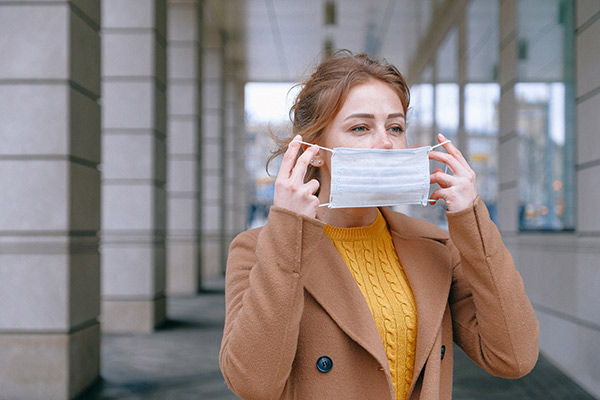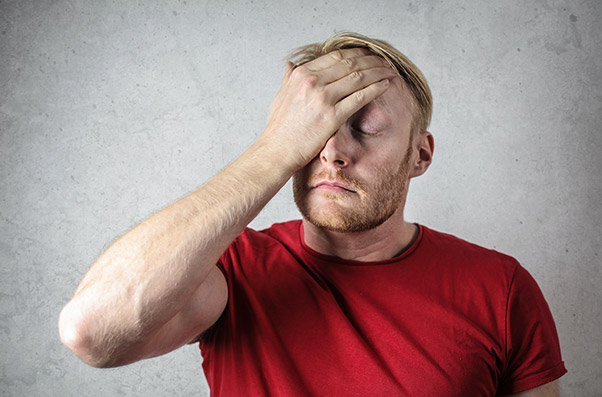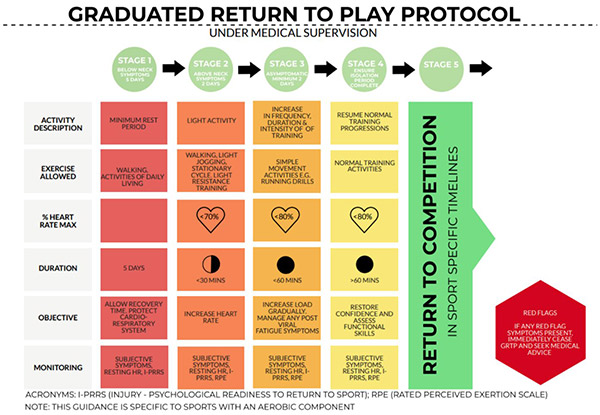What is Long-Covid, Recovery and Returning to Activity
My Covid Experience:
I tested positive to Covid-19 with a rapid antigen on a Sunday, the day I first noted symptoms of Covid-19. My wife had tested positive on the Wednesday beforehand. My kids tested positive the day after me. Clinic-wise I feel that I hadn’t been a threat to anyone as I had been off work and isolating at home since my wife had tested positive.
I’d been very diligent with my vaccinations: having had my booster shot 3 months beforehand – I wasn’t so worried about self-protection, but wanted to make sure all was done on my behalf to
a) ‘slow the spread’ and
b) protect those who I come in contact with who are at greater risk of significant disease or can’t be vaccinated.
I was OK with the cold-like symptoms: runny nose, slight productive cough, headache, sinus pain, sneezing, loss of smell. I could deal with that with a few Panadol and a good supply of tissues.
The thing that threw me though, right from day 1 post the positive test was the fatigue and brain fogginess!
Once my wife had tested positive, and we knew that we had at least a week at home to ourselves not going anywhere, we thought that we had a chance to get some work done on our backyard. The backyard is kept tidy – but with a 1 and a 3 year old, and both parents working close to full time, it needed some closer attention.
The list of jobs:
- Tree roots from a recently felled tree needed digging up,
- white small stones edging the lawn and paving that look good until small people clog the drains with them need removing,
- poor soil to be dug up and wheelbarrowed out,
- the right time of year for fertiliser put down for the plants,
- topsoil to be spread prior to more turf being laid,
- unnecessary pavers to be ripped up.
- get that new turf down
Prime opportunity right! Unfortunately, how wrong was I.
For a few days in a row I struggled with digging/shovelling or using an axe for more than 5 mins in a row (my wife may argue that this is not too far from the norm…). I was kaput! More education was needed for me!
I was ‘lucky’ (?) in that this was as bad as my symptoms got, and feel that I had a relatively quick recovery. Unfortunately for a lot of people diagnosed with Covid-19, recovery has not been as simple and becomes a long process. People with on-going symptoms are referred to as suffering from long-Covid.
So What is Long-Covid?
According to healthdirect, a person is usually considered to have long Covid if their symptoms have persisted for longer than 4 weeks after their initial infection.
These symptoms may include:
- Shortness of breath, heart palpitations, chest pain/tightness
- Ongoing problems with memory and concentration
- Changes to taste/smell
- Joint and muscle pain
- Extreme tiredness (fatigue)
Approximately 52% of long covid sufferers report fatigue as their main symptom – by far the most common on-going reported issue.
It is still unknown how long symptoms of long-covid may last. Please see later in the article some strategies to aid in rehabilitation from long-COVID.
Returning to Activity Post-Covid Diagnosis:
As a team here at Sport and Spinal Physiotherapy, we were lucky to have one of our physiotherapists provide an in-house inservice on post-covid recovery.
The key take-away points that his research and reading found were:
Generally* exercise is an important part of recovering from COVID-19. If your symptoms were mild, you can start exercising again if:
- you’ve had 10 days of rest since symptoms started
- there has at least 7 days with no symptoms, and
- you’re no longer taking any medications such as paracetamol
(*long-Covid sufferers may not benefit from exercise as part of rehabilitation. See later in article)
If symptoms were more severe, return to exercise should be guided under medical direction.
It is important to have a graduated return to baseline level of training, as there is an increased risk of injury when returning to activity after a period of time off.
The ACWR (Acute: Chronic workload ratio) of between 0.7-1.4 is a good guideline to help decrease risk of injury. Have a read here to get an understanding, as it is a good tool in planning exercise duration, intensity and frequency after time off.
The British Journal of Sports Medicine recently published a blog article updating graduated return to play guidelines after covid infection.
It has been found that those who are Covid-positive but asymptomatic or only experience ‘above neck’ symptoms (eg cough, loss of taste or smell) tend to recover faster and can resume baseline training quicker than those who suffer ‘below neck’ or more systemic symptoms (including, but not limited to: fever, shortness of breath, chest pains or palpitations).
The Graduated ‘Return to Play’ Protocol for Athletes:
The graduated return to play protocol as published is a 5 stage protocol to help athletes return to sport after Covid-19 diagnosis. It distinguishes between those who are asymptomatic or only have ‘above neck’ symptoms, and those with ‘below neck’ symptoms.
It takes into account an athletes psychological ‘readiness’ to return to sport, the rate of perceived exertion, and involves heart rate monitoring.
For athletes who exhibit ‘above neck’ symptoms only, the GRTP starts at stage 2, and is a minimum of 5 days to completion. For those who exhibit any ‘below neck’ symptoms, their GRTP starts at stage 1, with a minimum of 10 days to completion.
‘Red flag’ Symptoms! Consult a medical professional if any of these occur while graduating return to play:
- Dyspnoea – severe or increasing breathlessness
- Syncope – faint/passing out
- Exertional lightheadedness
- Psychological/mental health concerns
- Chest pain – dull, sharp, central or left sided with radiation to back, neck or arms
- Palpitations
- Unusually high heart rate during exercise or slow heart rate recovery
- Persistent headaches
- Fatigue – overall or excessive fatigue/failure to recover
- Unusually high rate of perceived exertion
Long-COVID Recovery
Unfortunately for some, recovery from Covid is on-going. Timeframes for recovery are unknown and rehabilitation strategies need to be carefully managed.
Rehabilitation for Long COVID must be tailored to the individual – depending on their symptoms, goals and preferences.
There is caution against using graded exercise therapy as a tool in recovering from long-COVID. People with long-COVID can suffer from fatigue and post exertional symptom exacerbation (PESE).
PESE can really affect people’s ability to function in day-day life.
I have come across Long-COVID physio as a great source of information, and World Physiotherapy. Both have provided a range of useful resources:
- activity diary
- Fatigue and Post-Exertional Symptom Exacerbation
- How to use pacing with your Physiotherapist.
Here in Canberra, the Post-COVID Recovery Clinic, provides rehabilitation for people having long term problems after COVID-19 infection.
Faster recovery from long-COVID will hopefully come about as more research is undertaken and learnings made.
References:
https://www.healthdirect.gov.au/covid-19/post-covid-symptoms-long-covid
Elliott N, Martin R, Heron N, et al
Infographic. Graduated return to play guidance following COVID-19 infection
British Journal of Sports Medicine 2020;54:1174-1175.
https://blogs.bmj.com/bjsm/2022/04/23/graduated-return-to-play-after-sars-cov-2-infection-what-have-we-learned-and-why-weve-updated-the-guidance/
https://www.abc.net.au/news/2022-04-19/long-covid-treatment-clinic-/100998416
https://bjsm.bmj.com/content/50/4/231
https://www.ncbi.nlm.nih.gov/pmc/articles/PMC2657021/
https://www.actionforme.org.uk/get-information/managing-your-symptoms/graded-exercise-therapy/
https://www.abc.net.au/news/2022-04-19/long-covid-treatment-clinic-/100998416


